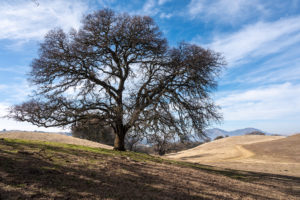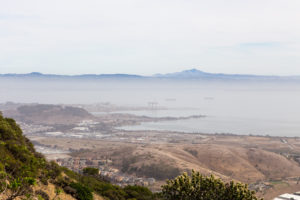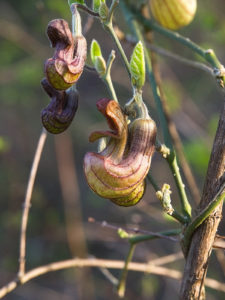“Here we go! A very fine example, a legitimate Mason’s ceanothus,” says our guide, pointing to a large shrub with delicate, dark green leaves as a crowd gathers round.
“But drat,” she continues, “its buds aren’t open!”
Cameras appear, and leaves and buds inspected by curious eyes. Moments later there is a sudden flutter among the dozen participants of the Rare Plant Treasure Hunt as a full-blooming Mason’s ceanothus is found a little further down the trail.
The plant “hunters” work off historical records of rare plant locations, some dating as far back as the nineteenth century. Once found, the locations are mapped using GPS. The goal: update the location and numbers of California rare plants in the California Natural Diversity Database.
“This helps us learn which populations are still present, and which may be destroyed by development or any other threats,” said the hunt’s coordinator, Danny Slakey. “It helps us to protect rare plant conservation needs.”
The Rare Plant Treasure Hunt, a statewide project of the California Native Plant Society’s education program, was launched two years ago. The project matches up experienced botanists with volunteers. This particular group is a sprightly collection of retired couples, amateur and professional botanists, Americorps volunteers, students, and other enthusiasts, who have all volunteering their day to scour a section of Mount Tamalpais trail in search of the endemic Mason’s ceanothus and Bolinas manzanita.
The information collected helps protect rare plants, both for their intrinsic value and for the purposes of managing the land and the ecology.
“Finding a rare plant tells you different things, depending on the plant,” said MMWD ecologist Andrea Williams. “Some species are sensitive to changes in their habitat– they need fire, or a certain level of moisture, or bare ground to persist. Finding those tells you the land is healthy– it’s intact, along with its disturbance regime.”
These healthy plant communities can then potentially serve as reference points for restoration or monitoring purposes, or even as a seed source.
Project participants have also been involved in some exciting botanical finds. Last year, volunteers near Fort Bragg spotted the Mendocino dodder, which had not been seen in more than 30 years and was thereby thought to be extinct. The data has also influenced public policy, as was a case last year in Ridgecrest when a decision not to build a solar farm hinged, in part, to the finding of the desert tortoise’s favorite plant
So you can make a mark on science by participating and perhaps discover a new identity as a botanical sleuth.
Mount Tamalpais Rare Plant Treasure Hunts, in coordination with the MMWD will continue through the summer. Check out the calendar of events or email treasurehunt@cnps.org to get involved.

.jpg)




